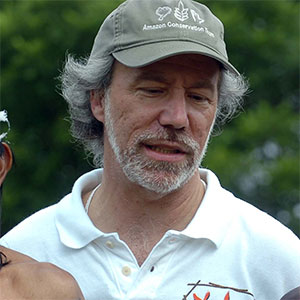“Each time a medicine man dies, it is as if a library burned down.”
Ayahuasca, Shamanism and Conservation in the Sibundoy Valley of the Colombian Amazon.
“For 25 years, the Amazon Conservation Team has been partnering with indigenous colleagues of Sibundoy to develop and implement projects and programs to help these people protect their land, their biota, their cultures and their shamanic practices.”
Transcript Abstract
The Sibundoy is a bowl-shaped depression on the eastern edge of the southern Colombia Andes. Ringed by steep mountains, inundated by tropical rains, it is truly a valley obscured by clouds. And these heavy rains – coming from thousands of miles of Amazon rainforest to the east – form the headwaters of the mighty Putumayo, the major river of the Colombian Amazon. The Sibundoy is located in the narrowest stretch of the Andes and neighbors the lowest pass in the northern Andes, marking the shortest distance between the Pacific shore and the Amazon rainforest. As such the Sibundoy was both a crossroads and a sanctuary for medicinal and edible plants of the region. Richard Schultes claimed that the Sibundoy harbored the highest concentration of psychoactive plants in South America, if not the world. And he wasn’t speaking in theoretical terms: it was here in Sibundoy that Schultes (and the world) was introduced to ayahuasca by the charismatic shaman, Salvador Chindoy. However – as is the case in so many of the once remote regions of the world – the flora, fauna and cultures of the Sibundoy are increasingly threatened by the usual factors: acculturation, climate change, land grabs, road building and poorly planned development schemes.
For 25 years, the Amazon Conservation Team has been partnering with indigenous colleagues of Sibundoy to develop and implement projects and programs to help these people protect their land, their biota, their cultures and their shamanic practices. From establishing medicinal/psychoactive plant gardens to building an ethnoeducation school, to ethnographic mapping to establishing new reserves to helping them obtain legal and ironclad titles to their lands, this partnership has proven to be a very successful biocultural conservation effort. It has not only resulted in better protection of both land and culture, but also the efficient and effective intratribal and intergenerational transmission of shamanic wisdom of ayahuasca and other healing plants.

